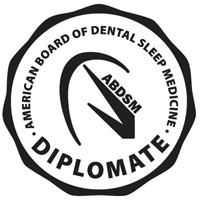How should a child be evaluated for sleep apnea?
Kids sleep study Eastside
Obstructive sleep apnea, or OSA, is a disorder in which the airway becomes blocked during sleep. The stress of trying to breathe causes sleep disturbances, with repeated awakenings throughout the night, even though the patient very often doesn’t remember this. Adults with sleep apnea often notice that they feel tired throughout the day, even when they’ve spent eight hours or more in bed at night. Children may also show daytime sleepiness, or their sleep apnea may manifest itself in other ways, such as hyperactivity, poor school performance, or even bedwetting.
If your child displays some of the possible symptoms of sleep apnea, the next step is a thorough evaluation, to determine whether treatment for sleep apnea would be appropriate. How is this evaluation performed?
Sleep studies in children
The standard test for diagnosing sleep apnea is called a polysomnogram, or PSG; it’s generally known as a sleep study. The most comprehensive way to perform the test is to have the patient spend a night in a sleep laboratory. The patient is attached to a variety of monitoring equipment, to monitor their breathing, heart rate, brain waves, and body movements. Then the patient sleeps in the lab, while the data is recorded all night.
Even adults often have trouble falling asleep in a laboratory while attached to all of this equipment. With children, getting them to sleep in this very strange situation may be extremely difficult. This makes the interpretation of the sleep study difficult as well. If a child has a night of disturbed sleep while sleeping in lab, does it mean that the child has a sleep disorder, or simply that the laboratory was not a good environment for sleeping?
Home sleep studies may offer an alternative
A home sleep study can be used in children or adults to evaluate for possible sleep apnea. For this study, the patient (or their parents) are taught how to use portable monitoring equipment. The patient then wears the equipment at home, and sleeps in their own bed for the night. When the equipment is returned to the provider, the data from the sleep study can be downloaded and evaluated.
The primary advantage of a home sleep study is that it’s generally far easier for a patient to fall asleep in their own familiar environment than in a laboratory. Because of this, the results may be easier to interpret, since they are likely to more closely resemble the patient’s natural sleep patterns. Additionally, the cost of a home sleep study is far lower, and it’s much more convenient.
There are downsides to a home sleep study. For example, a technician is not monitoring the equipment at night, and so some of the sensors may move or fall off during sleep. If this happens, then the study will have to be repeated. There is also less monitoring equipment used during a home sleep study than in the laboratory. Because of this, a home sleep study sometimes doesn’t provide a definitive answer, and a laboratory sleep study may still be suggested.
Sleep apnea can have serious consequences for a child’s health – kids sleep study Eastside
Untreated sleep apnea can cause a variety of symptoms, including hyperactivity, poor academic performance, and even bedwetting and sleep terrors. Research has even shown volume loss in the brain resulting from sleep apnea. It’s important to have a child evaluated if sleep apnea is suspected, because treatment can have a huge positive impact.
If you suspect that your child may have sleep apnea, please contact us to schedule an appointment with Dr. Mulliken. As an expert in sleep dentistry, he can offer you professional evaluation and guidance. If your child does have sleep apnea, he’ll explain the treatment options, which can include surgery, a CPAP machine, or an oral device worn at night. Your child deserves to thrive in life, without the suffering that sleep apnea can cause.





